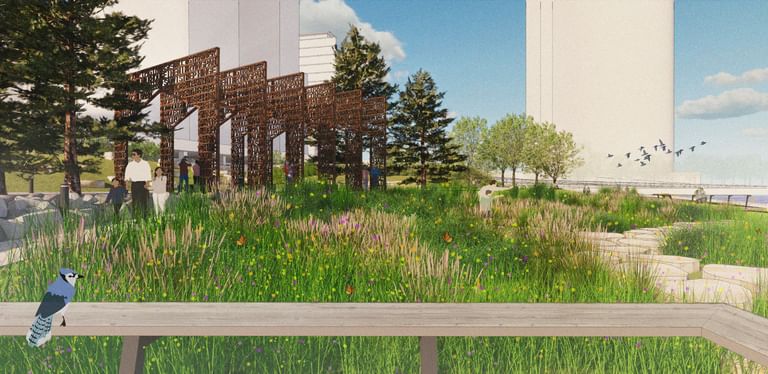Parallel Histories
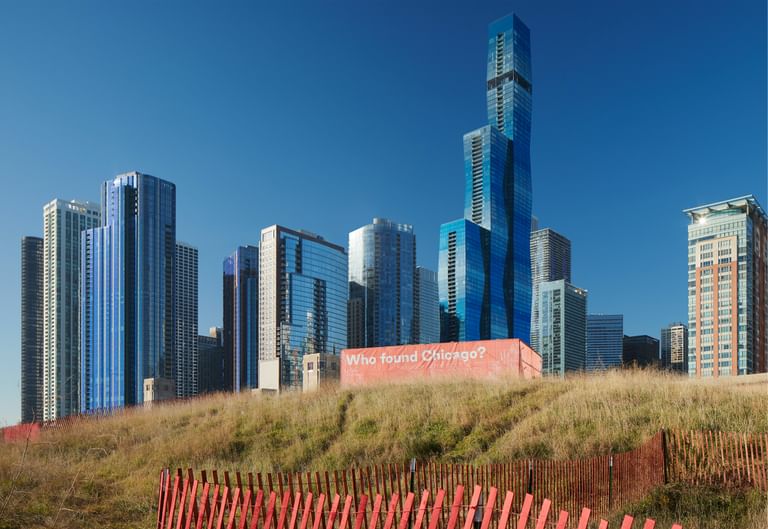
Parallel Histories was a commissioned installation at the 2023 Chicago Architecture Biennial. Two “drawings” explore the natural and built stories of Chicago. A traditional map cataloging the geographic movement of the Chicago River, on view at the Chicago Cultural Center, is paired with a reinterpretation of Jean Baptiste Pointe DuSable’s estate on the site of the park named in his honor. Both pieces reflect on the past, present, and future stories of the land that birthed a modern metropolis.
The sale of DuSable’s land, buildings, livestock and household goods in 1800 provide a glimpse into the sophisticated enterprise he operated. DuSable’s success was due in part to his complex identity: Haitian, French, African, and Potawatomi kin.
Parallel Histories reinterprets DuSable’s estate as “line drawings” on the park site. The Framehouse (primary residence) is wrapped in a pattern that overlays Chicago’s prairie landscape with the livestock DuSable kept and two questions:
Who was DuSable?
Who found Chicago?
This call and response between the past and present builds momentum for Chicago’s newest civic space — DuSable Park.
Client: The Chicago Architecture Biennial
Program: Temporary Installation
Project Features
Chicago Reader— “Discover Chicago’s layered history“
Architizer—“Parallel Histories receives a Special Mention in the Architizer A+ Awards in the Pop-Ups and Temporary Category“
World-Architects—“ ‘Parallel History’ at DuSable Park: A Step Toward a Future Park“
Dezeen—“Ross Barney Architects creates pavilion exploring “layers” of early Chicago”
Parallel Histories was designed by Carol Ross Barney, and collaborators Ryan Gann and the DuSable Park Design Alliance.
Special thanks: Chicago Park District and DuSable Heritage Association
Project team: Annie Ball, Simon Peschong, Victor Alexander Torres, Lauren Eaton, Jenny Chemansky, Calen Heydt, Monika Plioplyte, Stella Brown, and Carlye Frank
Photography credit: © Kendall McCaugherty / Hall + Merrick + McCaugherty
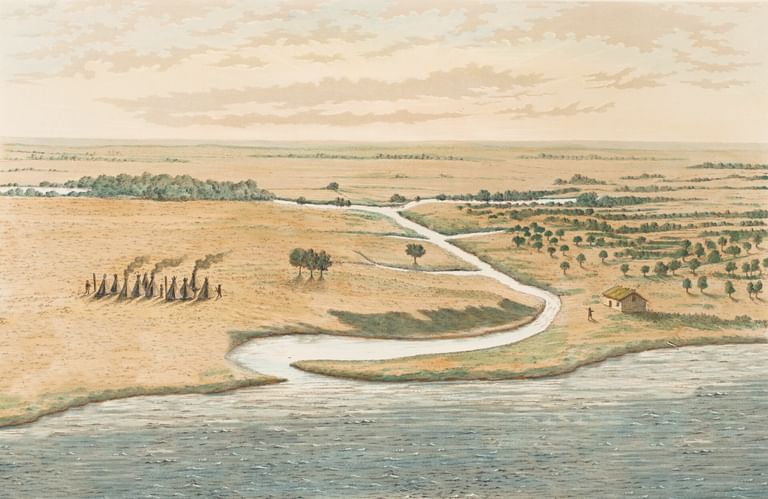
Chicago in 1779, Illustrated by Raoul Varin circa 1926-1932 © Chicago History Museum
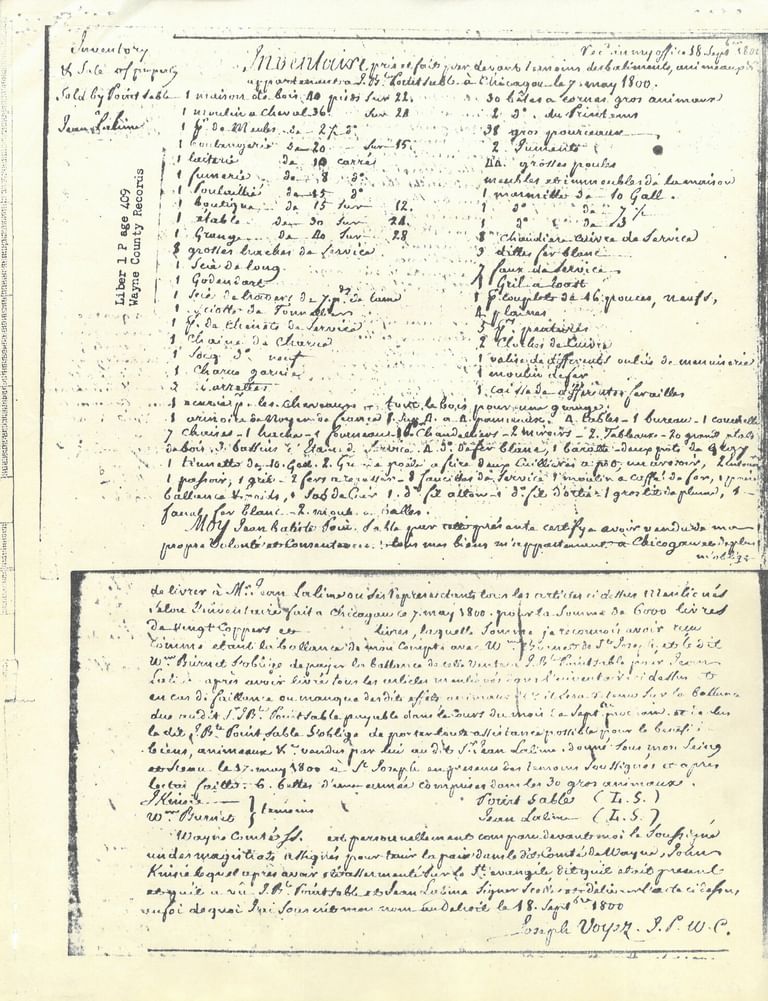
Inventory of property owned by DuSable © Chicago History Museum
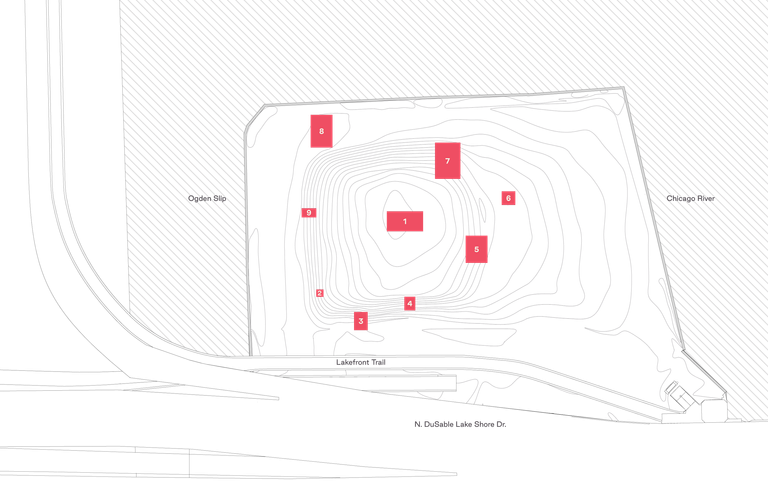
1 Framehouse
2 Smokehouse
3 Bakehouse
4 Workshop
5 Cow House
6 Poultry House
7 Barn
8 Horsemill
9 Dairy House
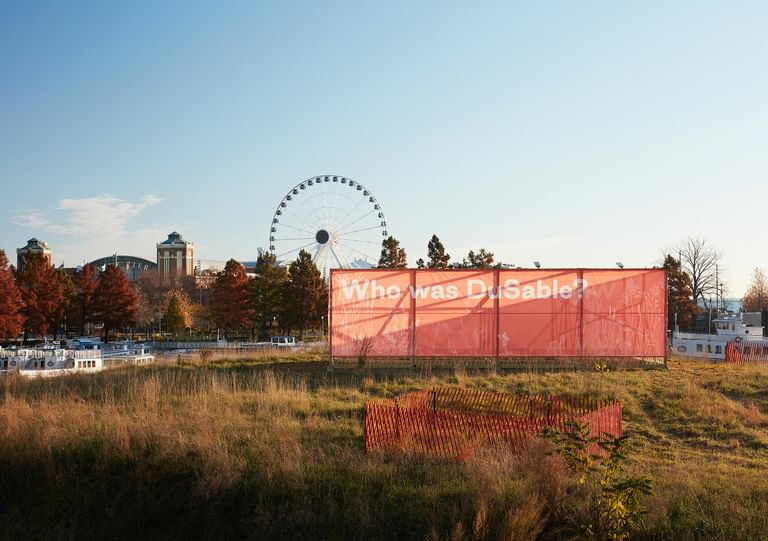
The enclosures remind us that what exists now once was not — cities are land, buildings, and stories heaped onto one another, where one history gets (often physically) flattened and paved over for another.
Anjulie Rao, Chicago Reader

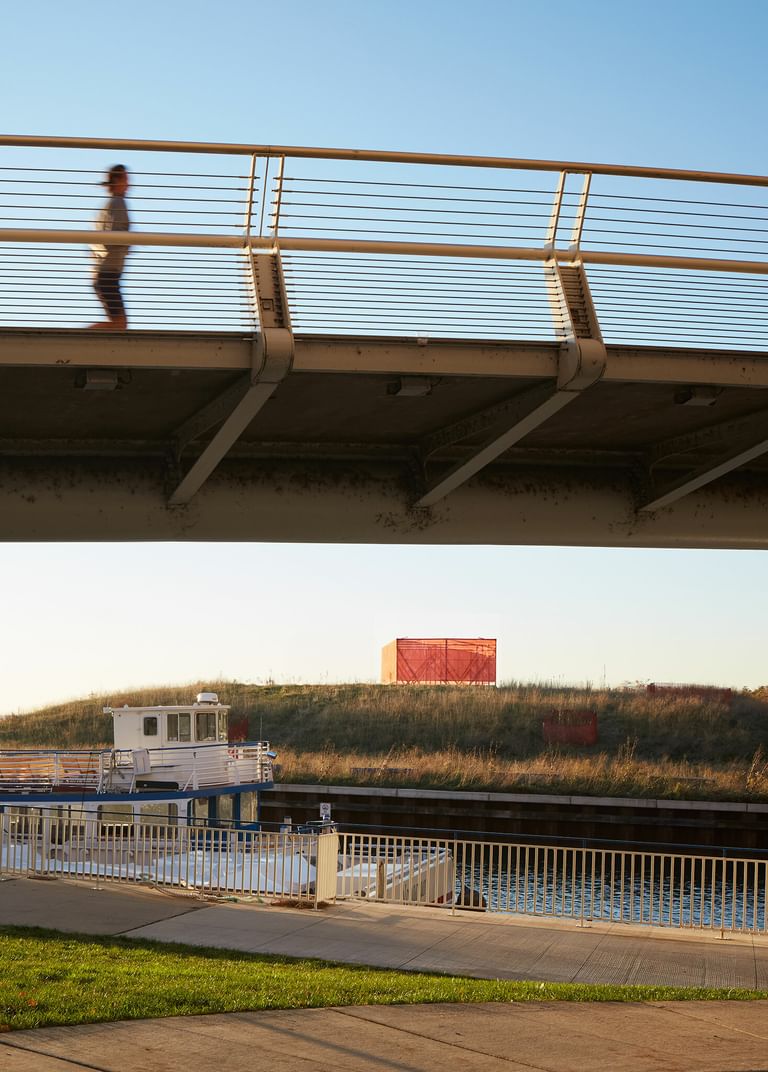
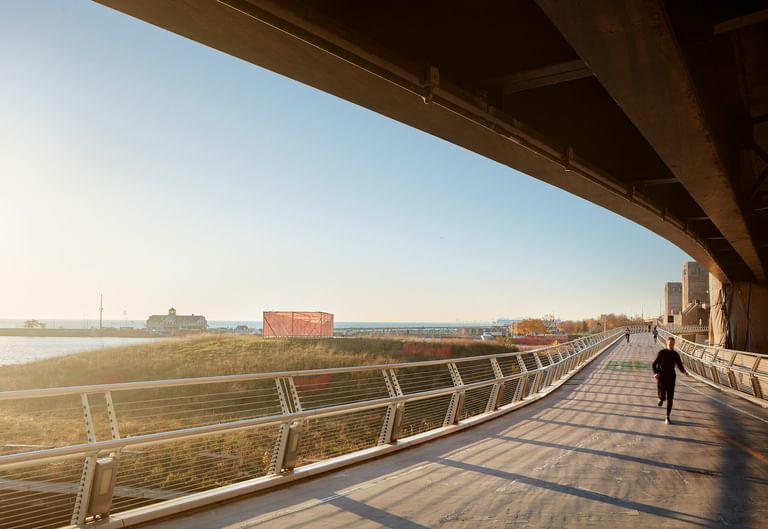
A second “drawing” translates critical moments in Chicago’s history with the geographic movement of the Chicago River. Some of these histories are contested, painful, and celebratory: unceded homelands, the arrival of Jacques Marquette and Louis Jolliet, the Great Chicago Fire of 1871, and the reversal of the Chicago River.
The resulting geometry captures the layered histories of Chicago in a single composition.
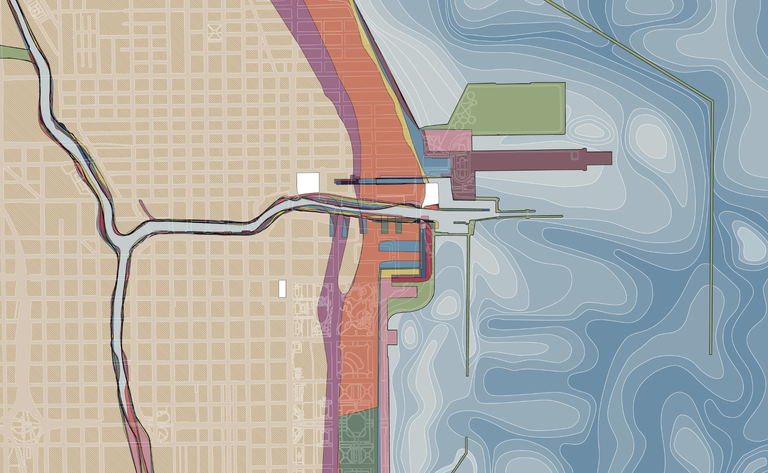
Parallel Histories, 2023
